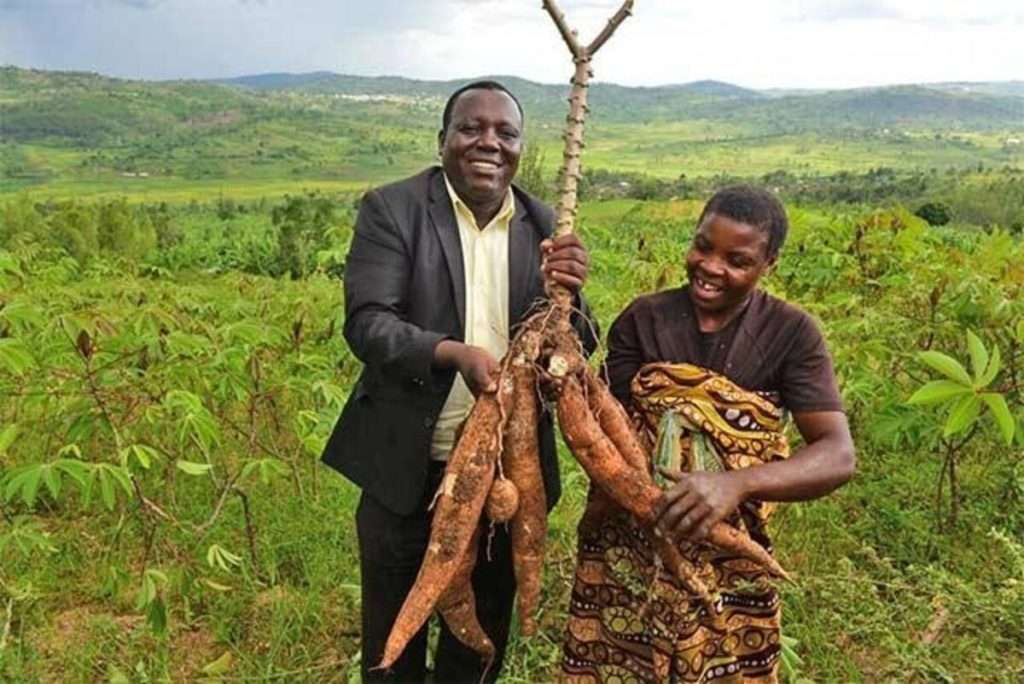Agriculture is Africa’s most important economic activity. According to studies, farming provides a living for 70% of the population in Eastern Africa, including the majority of those living in extreme poverty. Agriculture is, in fact, Africa’s most important employer. There are many various types of farming businesses one can attempt, but for this article, we’ll focus on how to start a Cassava farming business in Africa.
Table of Contents
How to Start a Cassava Farming Business in Africa
What is Cassava Farming?
Cassava farming is simply the cultivation of cassava. Cassava is one of the most important cash crops in the world, and due to this, investing in cassava farming is sure to be a lucrative venture, as long as you have the sufficient training required to get started and turn viable profits.
Cassava farming has numerous benefits like:
- Cassava has high drought tolerance.
- It can serve both as cash or subsistence crops.
- Its value doesn’t diminish with economic value.
- It serves as a good source of carbohydrates.
- It also makes a good source of products for both human and industrial use. For instance, Animal feeds, Alcohol, Glucose, Fertilizer, etc.
What to Consider Before Starting the Farm?
Cassava Farming does not require much effort compared to other types of farming. But it has procedures that must be followed strictly to get a bountiful, disease-free, and profitable harvest. I will break the process into four parts and why it is essential:
The first step on how to start a cassava farming business in Africa involves getting farmland (before planting, herbicides should be applied to reduce the growth of weeds and diseases) and making mounds. Yes, these mounds enable easy harvesting of Cassava. Although some cassava farmers don’t make ridges for cassava, the result is that the cassava might split or get stuck in the soil during harvest. Planting Cassava in mounds enhances easy uprooting during harvest.
The second process requires gathering Cassava stems. Some tuber crops require planting their fruits, e.g, Yam. But in planting cassava, only the stems are needed. Dig the stem into the mound with the bud facing up. Doing the inverse would prevent germination.
The third procedure requires continuous weeding till the cassava is ready for harvest. Cassava farmers don’t joke with weeds because of the dangerous effect they could have on their produce. If weeds are left to grow with cassava, it takes up the nutrients meant for the cassava. Hence the output harvest will be small. According to IITA, weeding takes 50- 80% of the total labour budget of Cassava growers.
The fourth consideration on how to start a cassava farming business in Africa is getting a potential buyer before harvest. Many Cassava farmers make the mistake of harvesting their produce before seeking buyers. Cassava is a kind of crop that requires immediate sales.
Steps to Managing the Farm
To guarantee that the crop is in good condition, the following are some of the practices to carry out:
Irrigation:
The soil must be moist, and use sprinkler irrigation if there isn’t enough rain.
Fertilization:
The Fertilizer should be applied eight weeks after the plants have been planted. It should be put in a ring 6 cm wide and 10 cm away from the plant or scattered around the plant with caution. The fertilizer should not come into contact with the stem or foliage.
Weed control:
According to studies, the weeding schedule for cassava is at 4, 8, and 12 weeks after planting in the first growth phase. Procrastination in these stages could be very costly for the farmer and the plant itself.
Soil Nutrient Regulation:
Before replanting cassava, the farmer must fertilize the soil. Planting crops such as groundnut, peas, and oats, among others, can help farmers fertilize the soil.
How to Make Money from Cassava Farming
Interestingly, everything about cassava is profiting ranging from the stem to the tuber.
Sell the Cassava Stem:
You could sell cassava stems for a better price. You can sell the cassava stems to another farmer interested in getting into the industry after harvesting yours. You can grow a crop to fertilize your field during this period until you’re ready to plant another season of cassava.
Sell the Cassava Tuber:
You can bring your buyer to the farm and load their truck with the tubers. Moreso, you can take it to the market for sale. Cassava is willing to be bought anytime, any day.
Sell the Processed Cassava:
You can sell your cassava product in the market if you process it from raw to finished. You can use Cassava for a wide range of items:
- Cassava flakes (popularly known as Garri in Nigeria).
- Eba (made from cassava flakes and hot water).
- Amala (made from powdered cassava and hot water)
- Abacha and others.
Cassava-based meals contribute more to the production of carbohydrates in Africa.
Sell the Cassava Peels:
You can sell cassava peels to cattle rearers at a better price. It is what goats and other cattle eat.
Modern Technologies for Cassava Production
If you’re thinking about how to start a cassava farming business in Africa, you’ll need to keep up with current methods and mechanization. The following is a list of some of the equipment:
Harvester:
A semi-mechanized cassava harvester was developed and commercialized by the National Centre for Agricultural Mechanization (NCAM). NCAM evaluated these machines to harvest up to 200 plants per man-hour and fall into the semi-manual category of cassava harvesters because they require some human effort to operate effectively.
Peeler:
NCAM has created a manual instrument with a 35-40 kg/h output capacity, a 99 percent peeling efficiency, and less than 0.4 percent tuber loss. Other peeling devices include:
- IITA Peeling Tool
- PRODA Peeler
- 2-Action Zone Peeler.
Some Frequently Asked Questions
- What kind of soil should I use to grow my cassava?
Cassava can grow in any soil, but loamy soil is the ideal type to grow it in.
- Is Fertilizer Required for Cassava?
To ensure a plentiful output, a reasonable amount of fertiliser, which the cassava needs for growth.
- How can I tell if my cassava is ready to harvest?
Maturity reveals itself in different ways in plants; in cassava, it’s when the leaves turn yellow. It happens 8-10 months after plantation.
- How can I harvest my cassava without it breaking?
You cut the stem and leave it out closer to the mound. Wet the mound to soften the earth, then pull it up.
- How Do I get a buyer for my Cassava?
Visit the nearest market closer to you and speak with the cassava sellers. Most will show interest. You can also search Google for companies ready to purchase your cassava produce.

